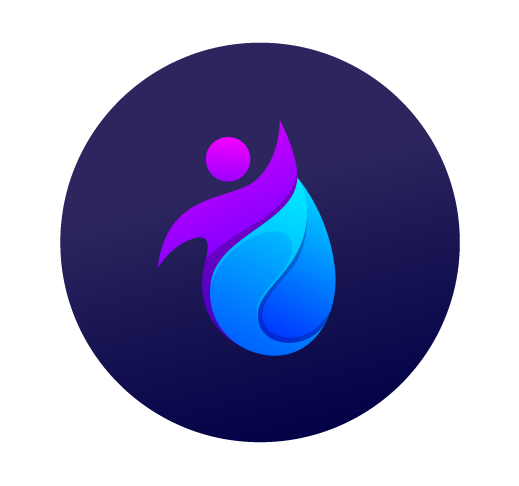Landing a job that genuinely excites you might seem daunting, but every career coach has a story about networking making all the difference.
From subtle referrals to direct introductions, the real pathways to opportunity are people. If you want access to hidden roles, networking delivers connections you can’t find on job boards.
Here, you’ll discover practical strategies readers have used to nurture relationships, seize unexpected job market breaks, and turn conversations into concrete job offers. Let’s dive in.
Build Connections With Purpose and Strategy From Day One
Your first step is creating a purposeful approach. Rather than collecting business cards, prioritize meaningful conversations that set up natural follow-ups for ongoing networking in the job market.
If you say, “I’m curious about growing in your field,” you engage more effectively than asking for a job immediately. This builds credibility and trust in every professional interaction.
Choosing Where to Invest Your Networking Energy
Prioritize proven venues: alumni meetups, professional events, and targeted online groups. Instead of spreading thin, focus where your goals and values align with others in the job market.
Try: If you’re seeking a project management job, attend a PMI local chapter, or message someone with “I’m pursuing project management roles and would value your perspective.”
Each event or direct message should have a concrete purpose. Use a simple mental checklist: Does this connection help me learn, get noticed, or open doors relevant to my dream job?
Recognizing Genuine Networking Opportunities
Spot genuine openings: after a talk, introduce yourself and reference something specific you enjoyed. For digital networking, reply to posts with thoughtful, relevant insights that show expertise.
Be clear in your language and body cues. Smile, keep eye contact, and follow up after a good conversation with a thank you, reinforcing rapport and positioning yourself for future opportunity.
Example: During online events, use private chat to mention a shared interest. Later, send a LinkedIn DM: “Loved your point on problem-solving. Let’s keep the conversation going.”
| Networking Venue | Typical Audience | Best Approach | Takeaway |
|---|---|---|---|
| Industry Conferences | Senior & Junior Professionals | Reference session topics to start conversations | Prepares you to follow up meaningfully post-event |
| Online Forums | Peers & Enthusiasts | Answer questions or share insights in threads | Demonstrates knowledge, sparks direct connections |
| Workshops | Mid-career Changers | Participate actively, volunteer for group tasks | Shows collaborative skills and initiative |
| Networking Apps | Job Seekers & Recruiters | Craft concise intros, personalize each message | Maximizes quality responses and future referrals |
| Alumni Mixers | Like-minded Graduates | Mention shared background; ask smart, specific questions | Instant rapport, higher likelihood of referrals |
Leverage In-Person and Digital Ties for Real Results
Strong job market outcomes stem from nurturing both online and face-to-face connections. Each format offers a direct route to actionable opportunities, from informational chats to new job leads.
Blend classic handshake introductions with tailored LinkedIn outreach. Tracking your results helps you refine techniques, making your networking more efficient as you move toward your dream role.
Combining Old and New Approaches for Modern Job Seekers
Follow up any face-to-face meeting with a digital thank you message to keep your name top of mind. Try this after mixers or panel events for measurable response rates.
For digital-first connections, suggest a phone or video coffee meeting. Use natural, warm language: “Would love to hear about your day-to-day work next week. Quick call?”
- Join niche online professional groups and comment helpfully; people notice contributors who assist with concrete advice or resources, which leads to real-world introductions and inside tips.
- Attend local career meetups twice monthly; regular presence builds trust and makes you a familiar, memorable candidate, ready for referrals before jobs are posted.
- Send one thoughtful follow-up per week using a real conversation topic; personalize by referencing your discussion, showing you’re attentive and genuinely interested in professional growth.
- Offer to help others, such as sharing contacts or resources; being resourceful increases reciprocity and makes others more willing to connect you with job opportunities that suit your skills.
- Track each interaction in a simple spreadsheet, noting contacts, follow-ups, and outcomes; this habit keeps your search organized, ensures timely replies, and helps measure networking progress.
Consistently executing these actions turns casual contacts into valuable professional allies who advocate for your success in the job market and refer you to high-quality roles.
Maximizing Job Leads From Casual Conversations
People mention jobs first to those they know. End informal chats—at community events or online forums—by expressing interest: “I’m on the hunt for my next challenge. Let me know if you hear of roles.”
Share relevant achievements naturally, such as discussing recent training or volunteer work. This keeps your experience visible without pressure or direct asks for a job.
- Ask specifically for connections to managers, not general advice; this approach signals you’re ready and serious, making referrals much more likely for your next role in the job market.
- Share targeted job search goals: “I’m looking for a data analyst role at a healthcare startup,” which helps contacts remember you when opportunities arise or when discussing current openings.
- Be transparent about timing: “I’m planning to transition within two months.” This gives your network a clear window to advocate and can encourage faster referrals toward networking success.
- Offer concrete value upfront, like industry news or introductions to your contacts; reciprocity strengthens mutual trust and improves future job search momentum, especially in competitive markets.
- Use reminders—calendar alerts help prompt monthly check-ins with key contacts; consistent, low-pressure touchpoints signal genuine interest and maintain fresh awareness for job leads.
Practicing these rules makes your outreach effective and prevents awkward encounters, so conversations can easily pivot into referral-ready networking moments.
Turn Weak Ties Into Powerful Advocates for Your Job Search
You can activate acquaintances, even if you haven’t spoken in years. Exploring these connections opens doors for the next opportunity—most job seekers overlook the magic of weak ties.
Each time you reconnect, reference a shared experience or interest. For example, “I enjoyed volunteering at TechFest with you. If you hear of product manager openings, I’d appreciate a heads-up.”
Reaching Out Without Awkwardness: Scripts and Scenarios
Send a friendly note: “Hi Jordan! Saw you joined XYZ Corp since our colleague days—congrats! I’m exploring similar jobs—let’s catch up soon.” Short, context-based greetings work best.
For weak ties, always mention a shared context. Reference a mutual friend, a past project, or a recent career milestone. This grounds your message in a real relationship and increases response rates.
As the conversation deepens, make specific asks: “If you know any team leads hiring data scientists, would you mind connecting me?” This direct tactic gets faster, clearer results for your networking goals.
Sustaining Relationships With Minimal Time Investment
Set reminders to follow up every three to six months, even briefly. Share an article, congratulate achievements, or send a quick hello on holidays. Consistent, low-barrier check-ins keep you top-of-mind.
Example: Message a past colleague, “Saw your recent talk on AI—great insights! Let’s grab coffee or chat soon.” Keep it brief, and your networking ties will stay warm for future opportunities.
If your contact refers you successfully, always acknowledge the help with tangible thanks. A brief call, handwritten note, or even a LinkedIn shoutout solidifies loyalty and sets the stage for future collaboration.
Apply Focused Networking Tactics to Land the Job You Want
Every table, list, and script here offers an actionable starting point to strengthen your job market presence and target your next dream role with intention.
Networking shapes professional outcomes by opening new pathways, accelerating your progress, and building long-term career allies—skills that deliver value far beyond a single application cycle.
Stay engaged, stay authentic, and practice targeted outreach. Your dream job is a relationship away—let every connection bring you one step closer to your career goals.



